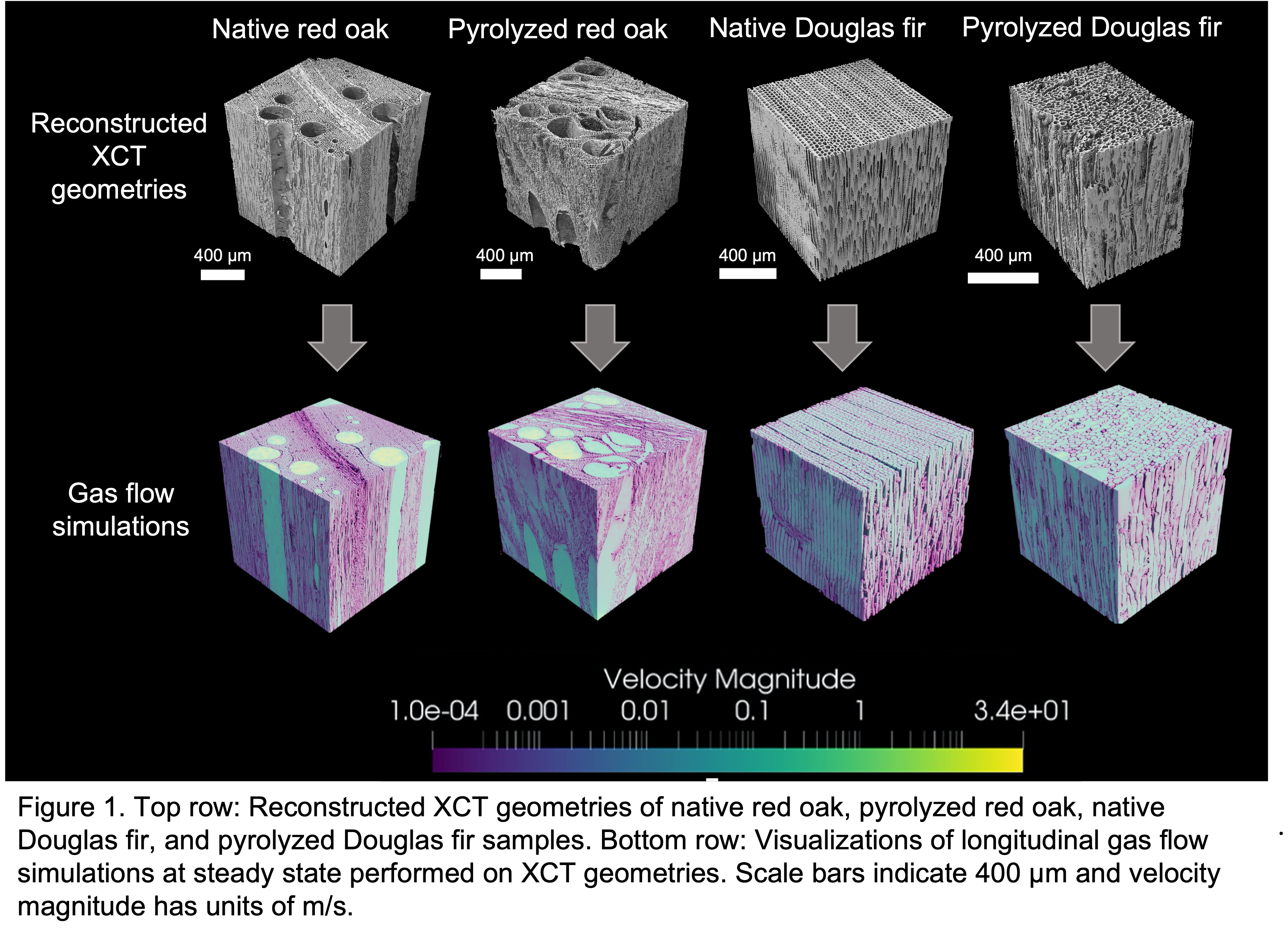(215c) Leveraging Advanced Imaging and Computational Techniques for Characterizing Biomass Feedstock Transport Properties
AIChE Annual Meeting
2022
2022 Annual Meeting
Sustainable Engineering Forum
Feedstock Conversion Interface Consortium – Understanding Feedstock Variability to Enable Next Generation Biorefineries (Invited Talks)
Monday, November 14, 2022 - 4:08pm to 4:27pm
Peering into the microstructure of lignocellulosic biomass reveals a complex, species-specific pore network that controls important functionalities including heat and mass transfer during conversion processes. Therefore, a quantitative understanding of the pore size, structure, and connectivity within biomass feedstocks is paramount to optimization of the conversion processes for biofuel and bio-based chemical production. This presentation will present new methods for detailed characterization of the microstructure of biomass, and its impact on intraparticle transport phenomena, from three-dimensional (3D) image reconstructions. First, we will provide a visual overview of the dominant microstructural features of two woody feedstocks, red oak and Douglas fir, using X-ray computed tomography (XCT) before and after the feedstocks are subjected to pyrolysis. Next, we will describe a method for directly calculating geometric properties including void fraction, pore size distribution, and tortuosity from the XCT images. Finally, we will present the direct calculation of the principal permeabilities along longitudinal, radial, and tangential directions by importing the 3D reconstructed geometries into an immersed boundary based finite volume solver to simulate gas flow through the porous structures. We find that the permeabilities of native biomass are highly anisotropic, differing by 3 to 4 orders of magnitude in the different principal directions, yet this anisotropy is significantly reduced in the biochar formed during pyrolysis. This presentation highlights a novel method for characterizing the transport properties of biomass feedstocks utilizing state of the art imaging and high-performance computational techniques. Additionally, the quantitative transport properties reported in this presentation can be leveraged by researchers in the biorefining community to strengthen the capability of reduced-order conversion models and account for feedstock-specific effects.


